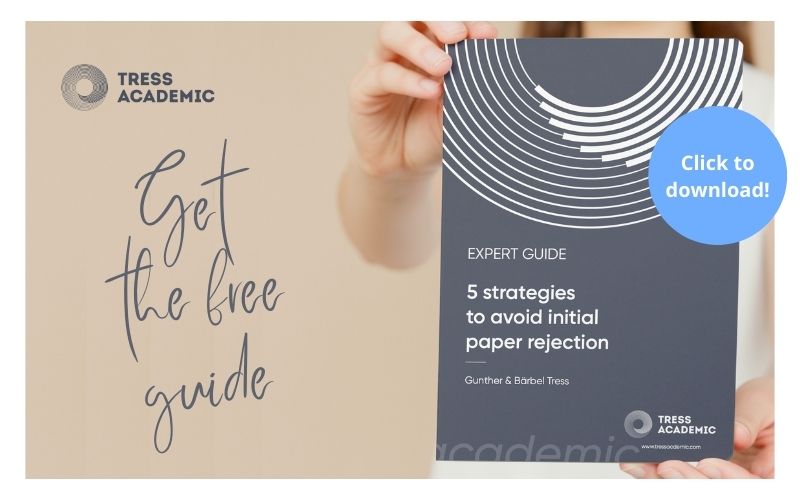Always wanted to know where reviewers first look at when reviewing a journal paper? In our courses, we have been asked this question many times. Here we will dive into the issue to shed some light on it and help you on your first leg of the peer-review process.

How reviewers work
Reviewers, like many of us, are busy people. They are academics employed at institutes and universities that have a lot of regular duties. Some of them are frequently asked by journals to review papers, but they might not always be able to spend a lot of time reviewing each individual paper.
Within the peer-review process, reviewers play an essential role in getting your paper published. They might come very quickly to an opinion of your manuscript, based on their first impression about your paper, its topic and the relevance. Once they built up this first impression, they will further judge your work with this opinion in mind, and may seek confirmation in the rest of it.
As it is foundational for how your paper is seen, let’s get a quick overview of how this first impression is created. Here, we’ll detail for you the top five aspects reviewers first look at before reading your entire paper. Crucially, we also explain to you why reviewers are so likely to look at these, what they try to get out of it, and what you can do to make sure reviewers get a good impression of your paper.
We recommend that you keep these five aspects in mind when drafting your next paper, to make sure you meet the reviewers’ expectations. It will definitely increase the chances of your paper passing peer-review and getting published!
1) Paper abstract
Naturally, your abstract is the first part that most reviewers see. They will get an email from the journal with an invite to consider reviewing your paper. To make the decision of whether to review your paper or not, the reviewers will receive your abstract to read. Once they have accepted the task of reviewing your paper, they get access to the full manuscript, but the abstract is still the first part of the paper that they will read.
Crucially, the 150-300 words of your abstract gives reviewers the first impression of your paper. They look for answers to the following questions:
- What is the topic of the paper?
- Why is it relevant?
- What is the research aim of the paper?
- Which method or approach has been applied?
- What have the authors found or achieved?
- What is the main message and the main benefit derived from this paper?
For further details on how to write a paper abstract that fulfils the reviewers’ expectations, have a look at our contribution “How to write a paper abstract” including its checklist available for download.
2) Paper objectives
If your abstract is not specific enough or if reviewers need more detail to fully understand what your research objective of the paper is, they will definitely look at your introduction at least briefly. They hardly look at the whole introduction at this stage, but probably just search the last paragraph that promises them a statement like “The aim of our paper is …” to give them a clear idea of which research question you address.
At this stage, they are foremost trying to judge the novelty and the relevance of your work. Imagine a reviewer looking at a paper and reading through this section only to find out that the question the paper deals with has been addressed in several papers before. Of course, this reviewer will hardly assume that your paper can add anything new to the field and might judge its relevance as low.
A reviewer might look for answers to the following questions:
- What is the exact research question that this paper addresses?
- What is the relevance of this question?
- What could be a potential gain from knowing the answer to this question?
So make sure that you present a specific research objective at the end of your introduction to convince the reviewer of your work’s novelty and relevance.

3) Conclusion section
The third most relevant section of your paper for reviewers to look at is towards the end: the conclusion. The conclusion is the part of the paper where the author summarises the advancement of knowledge that emerged from the paper.
A reviewer might look for answers to the following questions here:
- What can I learn from this paper?
- What is the take-home message related to the presented research objective?
- How does this paper bring us ahead?
- Does the paper consistently lead to the conclusions presented here?
In other words, the reviewer wants to see what the main message is that your paper presents. If there would be no message, no gain from the paper, why would somebody be interested to read it?
We recommend to always present a conclusion with a clear message and not just a repetition of the entire paper. The conclusion can be short and does not have to include an astonishing breakthrough, but there needs to be something memorable at the end!
4) Length of the paper
A reviewer might be curious about your work, might love the topic, but also has many other duties, and therefore time is of the essence. In simple terms, that could mean a long paper takes a long time to read and understand. A short paper is read and reviewed much quicker and would be less work.
Unsurprisingly, reviewers also look at the length of your paper. They do that for self- interest but also for the reader’s interest. A long manuscript needs to promise and deliver relevant content throughout, otherwise it will get judged as lengthy and wordy.
When writing your paper, don’t give the full report of everything you have done and found. It would be good to focus on the really important information and stick to the journal’s word limit.

5) References section
The last aspect on our list of things to quickly check is your list of references. No, reviewers don’t do this to make sure they find their own name cited (although some might probably appreciate it). Reviewers look through the references to get an idea about the state-of-the-art that your work reflects. They want to know whether you are up-to-date with the field.
They might look at the age of references, sources used, relevant authors listed or other indicators that could tell them quickly in which context your work was done.
When you write your paper, don’t overload it with references to impress reviewers – they might not see the relevance of so many sources for your paper and journals don’t like endless list of references either – focus on using relevant references.

Conclusion
Reviewing is a process where the reviewers gradually build a professional opinion of your paper. Some reviewers spend more time on this task, others less. As most reviewers do not necessarily review papers for fun, but rather see it as their duty to keep up quality control in academia, many reviewers will take shortcuts through your paper to help form their opinion. The five aspects listed above are certainly among the top aspects that reviewers look at. They are also not the only aspects reviewers look at, but scoring well on these enhances your chances of getting published substantially!
Relevant resources:
- Smart Academics Blog #1: How to write a paper abstract
- Smart Academics Blog #34: Seven features of a good response to reviewers
- Smart Academics Blog #36: 5 tips to get a paper accepted this year
- Smart Academics Blog #52: Why papers get rejected: 25 reasons you can avoid!
- Smart Academics Blog #121: How do you prevent paper rejection?
- Expert guide: 5 strategies to avoid initial paper rejection
More information:
Do you want to write a journal paper?
If so, please sign up to receive our free guides.
© 2019 tressacademic.com
Photographs by Mike Haupt at unsplash.com and FreedomTumZ on bigstockphoto.com
#PublishingPapers, #PeerReview, #JournalPaper
